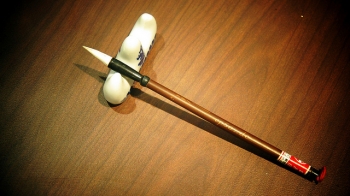MaloneEditorial.com: Four Writing-Conflict Exercises, Scenes

Okay, so you’ve effectively set the scene, and are ready to really dive into the conflict. But what actually is conflict in a scene? And how do you write it effectively?
Conflict should comprise about ninety-five percent of the scene in novel development. Yikes, you say! That much? Yep.
We all know the five main themes of conflict: Man against himself. Man against man. Man against environment. Man against nature. Man against machine. But conflict has very little to do with guns firing. It is rather what blows apart withina character. However, this conflict has to be external. Something has to give. Something or someone has to get. Something has to be happening in your story. The protagonist is in conflict with an antagonist while enroute to a goal. The character must resolve his conflict—within, without—for the story to have meaning. This is very important in book writing.
Ask yourself a few questions before you write the scene: How did the conflict come about? What were its roots? How is each person within it involved? How is the reader involved? Because of course, your reader must be involved or she’ll put down the book and not pick it back up.
Of vital importance to the conflict of the whole story, and for each scene:
· Establish the Story Question to begin the first scene of the book. This is your main point of the story, and contains the seeds of all conflict. Each and every scene has to have a piece of this main Story Question.
· Craft the incident to begin your story—the one that contains your Story Question—very carefully. This event (read, conflict) upsets your main character’s world, whether it be his wife leaving him because of his drinking, or aliens coming to attack the Earth. It causes him to want to restore balance. Most importantly, it creates a bond with the reader by arousing her curiosity as to whether the protagonist can achieve his goal (this is not the first time your reader should question your protagonist!).
Ask yourself: What is the worst thing that can happen to my hero? This should reveal to you his deepest desire and his greatest fear (his Achilles’ Heel, which will come to fruition later), both of which play into his story goal. In turn, this will help you construct a beginning incident of conflict that then carries the story through to the end–and provides the tension for readers to keep turning the pages.
· This question brings a significant change in the character’s reality—it challenges his status quo, and knocks him out of his comfort zone. No matter what he does from here, life isn’t going to stay the same. Nor, is he.
· It also accomplishes a huge goal—to give the reader something to worry about. That’s what keeps him reading. NOTE: the reader will lose interest with everything but the Story Question, so make sure every scene has a piece of that—something that relates to it, something the character has to manage in order to get to the Holy Grail at the end of the book.
Each conflict, plot point, scene leads to a disaster of some sort and keeps the central conflict at the core for our hero.
Tough work being the hero! And tough being the book author as well! How do you keep conflict going in your book development.
